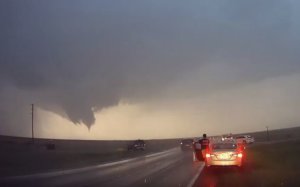Michael Snyder
EF3
I don't think its a stretch at all that the Dodge City (Bloom) EF3 would have created EF4 damage when compared to the Wynnewood Tornado. It was bigger and had horizontal vorticies. The Wynnewood, OK Tornado was definitely more of an eratic mover of the two, and had a lot more it could damage.

